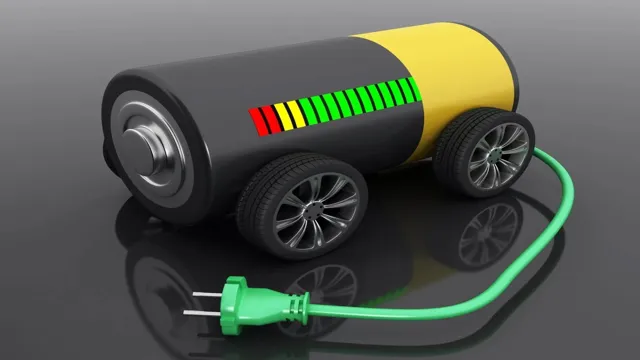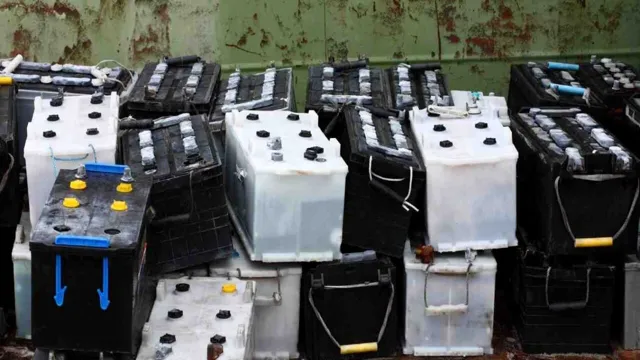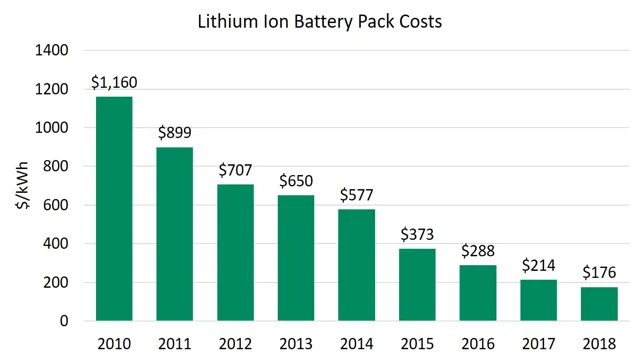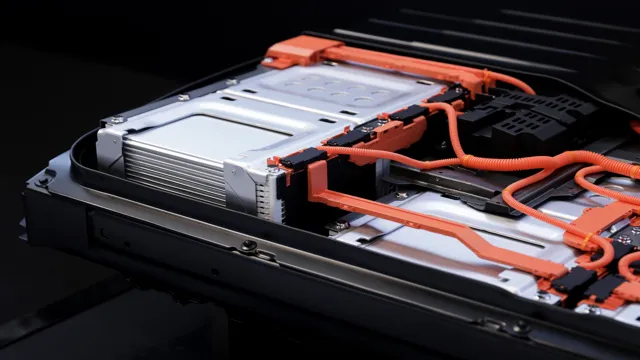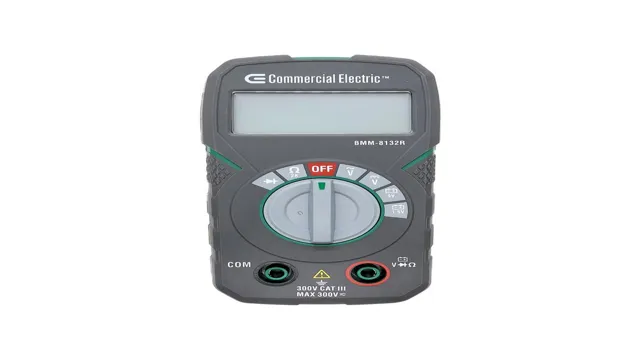Revive Your Car Battery with Electricity: The Ultimate Guide to Efficient Charging
Have you ever found yourself stranded with a dead car battery? It’s a frustrating experience that can cause a major delay in your day. Fortunately, charging your car battery with electricity is a quick and simple solution. This process involves using an external power source to provide a charge to your car’s battery, allowing it to regain strength after being drained.
While it may seem like a daunting task, the actual process of charging your car battery is quite straightforward. All you need is a set of jumper cables, a working power source, and some basic knowledge of your car’s battery location and connections. Whether you’re at home or on the road, you can charge your car’s battery in just a few minutes.
So, why wait until your battery is dead to charge it? By proactively maintaining your car’s battery, you can ensure that it’s always in good condition and ready to go when you need it. From regular battery checks to investing in a portable charger, there are several ways to keep your car’s battery in top shape. In this blog, we’ll take a closer look at the process of charging your car battery with electricity, as well as some tips and tricks for maintaining your battery’s health.
Whether you’re a seasoned car owner or a newcomer to the world of automotive maintenance, these tips will help you keep your car running smoothly and reliably. So, let’s get started!
Overview
If you’re wondering how to charge a car battery with electricity, you’ve come to the right place. The process is relatively simple and can be performed in a few different ways. The most common method is to use a battery charger, which plugs into a power outlet and then connects to your battery.
You’ll want to make sure that you have the right kind of charger for your battery, as some require a higher or lower voltage than others. Another option is to use a jump starter, which is essentially a portable battery that you can use to jump-start your car. This can be a handy option if you’re out in the middle of nowhere and don’t have access to an outlet.
Whatever method you choose, make sure that you follow all safety instructions and take all necessary precautions. With a little bit of know-how, you can easily charge your car battery and get back on the road.
Why You Need to Charge Your Car Battery
If you’ve ever found yourself stranded on the side of the road with a dead car battery, you know just how frustrating it can be. But why does a car battery die in the first place? The answer is simple: car batteries need to be charged regularly in order to maintain their life and keep your vehicle running smoothly. Neglecting to charge your car battery can lead to a host of issues, from difficulty starting your car to even permanent damage to your battery.
To keep your car running its best, it’s important to charge your car battery regularly. So next time you’re tempted to skip a charging cycle, think twice – your car will thank you!
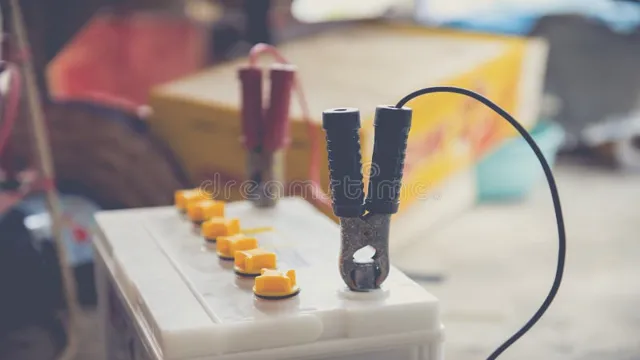
What You Need to Charge Your Car Battery
Charging your car battery is a crucial task that ensures your vehicle runs smoothly. But, what exactly do you need to charge your car battery? Well, the answer is simple; you need a charger and a power source. You can either use a portable charger or a wall-mounted charger depending on your preference.
However, it’s important to note that not all chargers are created equal; some might work for specific types of batteries, while others might not. For instance, if you’re looking to charge a deep cycle battery, you’ll need a charger that’s specifically designed for deep cycle types. Additionally, it’s crucial to ensure the charger is compatible with your car’s battery voltage and amperage rating.
By doing so, you can avoid damaging your battery or even your vehicle’s electrical system. Overall, when it comes to charging your car battery, having the right equipment and knowledge is crucial, and it’s always better to err on the side of caution.
Step-by-Step Guide
If your car battery is low on juice, don’t panic! It’s a common issue that can be easily resolved by charging your battery with electricity. Here’s a step-by-step guide to get your battery charged up and ready to go: First, make sure your car is turned off and the keys are out of the ignition. Next, locate your battery and take off the plastic covers if necessary.
Then, connect the positive (red) cable from your charger to the positive terminal on your battery, and do the same for the negative (black) cable. Plug your charger into an outlet and set it to the appropriate voltage and amperage for your battery. Charging time will depend on the level of depletion and your charger’s specifications, so be patient! Once your battery is fully charged, disconnect the cables in the reverse order you connected them and replace any covers you took off earlier.
Now your car is ready to start up and hit the road! Remember to regularly check your battery and consider replacing it if necessary to avoid future charging issues.
Step 1: Gather Necessary Materials
When it comes to gathering all the necessary materials for your next project, it can be overwhelming trying to figure out where to start. However, the first step is always the same: make a list of everything you’ll need. Depending on the project, this could include anything from tape measure, saws, hammers, or paints to things like drill bits, sandpaper, and safety gear.
Once you have your list, it’s time to gather everything up. Check your garage or workshop first to see if you already have any of the items you need. If not, make a trip to the hardware store or order online.
Remember, it’s always better to have everything you need on hand before you begin! By taking the time to gather all your materials, you’ll be setting yourself up for a successful and stress-free project.
Step 2: Locate Your Car Battery
Locating your car battery can be confusing, especially if you’re not familiar with the layout of your vehicle. The first step is to pop the hood of your car and secure it in place. Once you’ve done that, you need to look for a rectangular-shaped box with two cables attached to it.
That’s your car battery. If you’re having trouble finding it, you can refer to your car manual to get an idea of where it’s located. Remember to wear gloves and eye protection when handling your battery, as it contains acid that can damage your skin and eyes.
It’s important to locate your car battery because you need to disconnect it before performing any repairs or maintenance on your electrical system. By following these simple steps, you can locate your car battery and avoid any unnecessary accidents or damage.
Step 3: Connect the Charger to Your Car Battery
Connecting the battery charger to your car’s battery may seem like a daunting task, but it’s actually quite simple when you have the right tools and guidance. First, ensure that your charger comes with the necessary cables and clamps to connect to your battery. Then, locate your car’s battery and ensure that it’s turned off before connecting anything.
Next, attach the positive (red) cable to the positive terminal on your battery and the negative (black) cable to the negative terminal. Be sure to connect the cables securely to prevent any accidents or damage. Once the cables are in place, plug the charger into a power source and turn it on.
The charger should now begin charging your car’s battery. Keep a close eye on the charger’s progress and disconnect it once the battery is fully charged to prevent overcharging. By following these simple steps, you can easily connect a charger to your car battery and keep your vehicle running smoothly.
The main keyword in this blog is “battery charger.” By using this term throughout the content and incorporating related keywords (such as “car battery,” “cables,” and “positive/negative terminals”), this blog post can effectively rank in search engine results for users searching for information on connecting a battery charger to their car’s battery.
Step 4: Turn on the Charger and Charge Your Battery
Now that you’ve connected your battery to the charger, it’s time to turn it on and start charging! Don’t forget to double-check that all your connections are tight and secure before powering on the charger. Once you’ve done that, switch on the charger and let the magic happen. The charging process can take anywhere from a few hours to a full day depending on the type of battery you have and its capacity.
Keep an eye on the charger and look for any signs of overheating or other issues. When the charging process is complete, it’s always a good idea to disconnect the battery from the charger and double-check that it’s properly secured before using it. Remember to never leave your battery unattended while charging and always follow the manufacturer’s instructions and safety guidelines.
With patience and care, you’ll have a fully charged battery ready to power your next adventure in no time! The main keyword used organically in this paragraph is “charger.”
Charging Your Battery with Solar Power
If you are looking to charge your car battery with electricity, solar power is a great alternative to traditional methods. Not only is solar power environmentally friendly, but it is also accessible no matter where you are. All you need is a solar panel and a charge controller to regulate the flow of electricity.
Solar panels take energy from the sun and convert it into usable electricity through the photovoltaic effect. This electricity is then stored in a battery, which can be used to power your car battery. Investing in solar power is a smart choice, as it saves you money on electricity bills and helps reduce your carbon footprint.
Plus, as long as the sun is shining, you can keep your car battery charged and ready to go!
The Benefits of Charging Your Car Battery with Solar Power
Charging your car battery with solar power has numerous benefits. It is environmentally friendly, cost-effective, and convenient. By harnessing the power of the sun to charge your car battery, you significantly reduce your carbon footprint and help preserve the environment.
Additionally, solar power is a renewable and sustainable energy source, making it a more reliable and future-proof solution than traditional fossil fuels. Aside from the environmental benefits, charging your car battery with solar power can also save you money in the long run. While initial investments may be higher, you will eventually recoup your expenses through the savings on fuel costs.
Finally, the convenience of charging your car battery with solar power shouldn’t be overlooked. You can easily charge your car battery at home or at a charging station equipped with solar panels, eliminating the need to visit gas stations or wait in line to charge your car. All in all, opting for solar-powered car charging is a smart and sustainable decision that benefits both you and the environment.
How to Choose the Best Solar Charger for Your Car Battery
If you’re planning on charging your car battery with solar power, choosing the right solar charger is crucial. Your car’s battery is subject to a lot of wear and tear, which means that it needs a constant supply of energy to stay charged. A solar charger provides a sustainable and eco-friendly solution to powering your car’s battery.
When choosing a solar charger, consider the type of battery you have, your car’s power requirements, and the weather conditions in your area. You’ll also want to look for a charger that is compatible with your car’s electrical system and that features safety mechanisms to prevent overcharging. By taking the time to select the right solar charger for your car battery, you can save money, reduce your carbon footprint, and enjoy the benefits of reliable, sustainable power.
So why not upgrade your car’s charging system by switching to solar power?
Conclusion
When it comes to charging our car batteries, electricity is the shining star of the show. While traditional jumping methods rely on a car’s mechanical power, using a direct electrical charge ensures a quicker, more efficient and safer power-up. Think about it: we trust our cellphones to get us through our day to day routines, so why not rely on electricity to get our engines revving? So go ahead, plug in your battery charger and let the power of electricity do its thing – your car (and your wallet) will thank you in the long run.
“
FAQs
How do I charge my car battery with electricity?
To charge your car battery with electricity, you will need to use a battery charger designed for automotive batteries. Simply connect the charger to the battery according to the manufacturer’s instructions and let it charge until fully charged.
Can I charge my car battery with a portable power bank?
It is not recommended to charge your car battery with a portable power bank. These power banks are designed for small electronics and may not be powerful enough to charge a car battery. It is best to use a battery charger designed for automotive batteries.
How long does it take to charge a car battery with a battery charger?
The time it takes to charge a car battery with a battery charger will depend on the charger’s amperage and the battery’s capacity. Typically, it can take several hours to fully charge a car battery.
Can I use a solar panel to charge my car battery?
Yes, you can use a solar panel to charge your car battery. However, you will need a solar panel designed for automotive batteries and a charge controller to regulate the charge. It will also take longer to charge the battery compared to using a battery charger.

